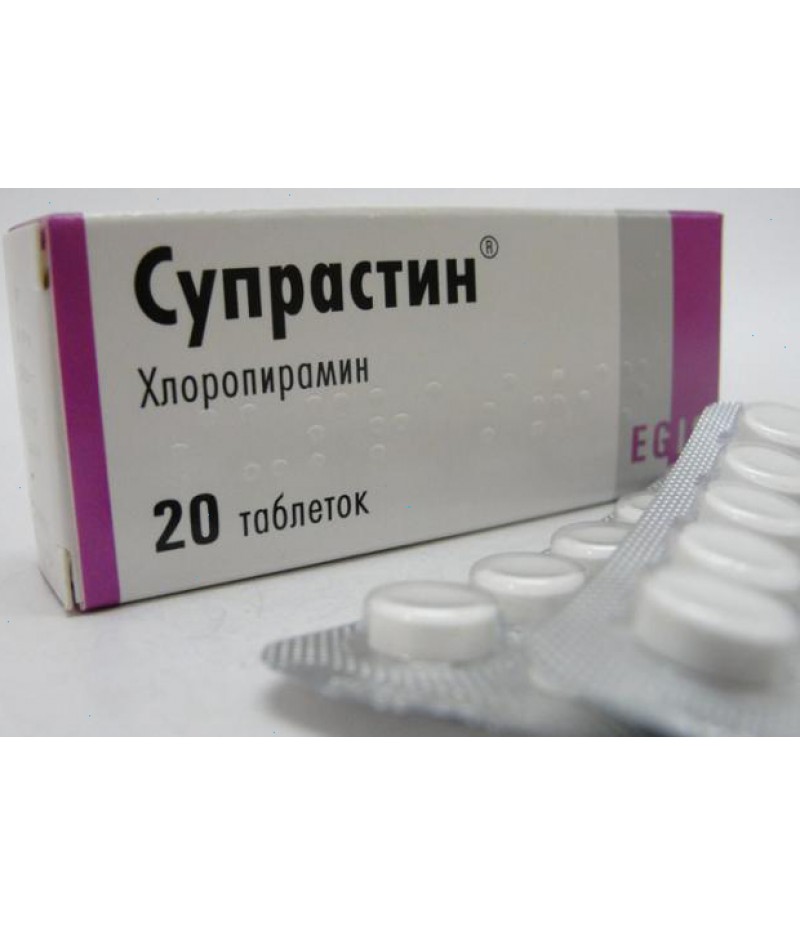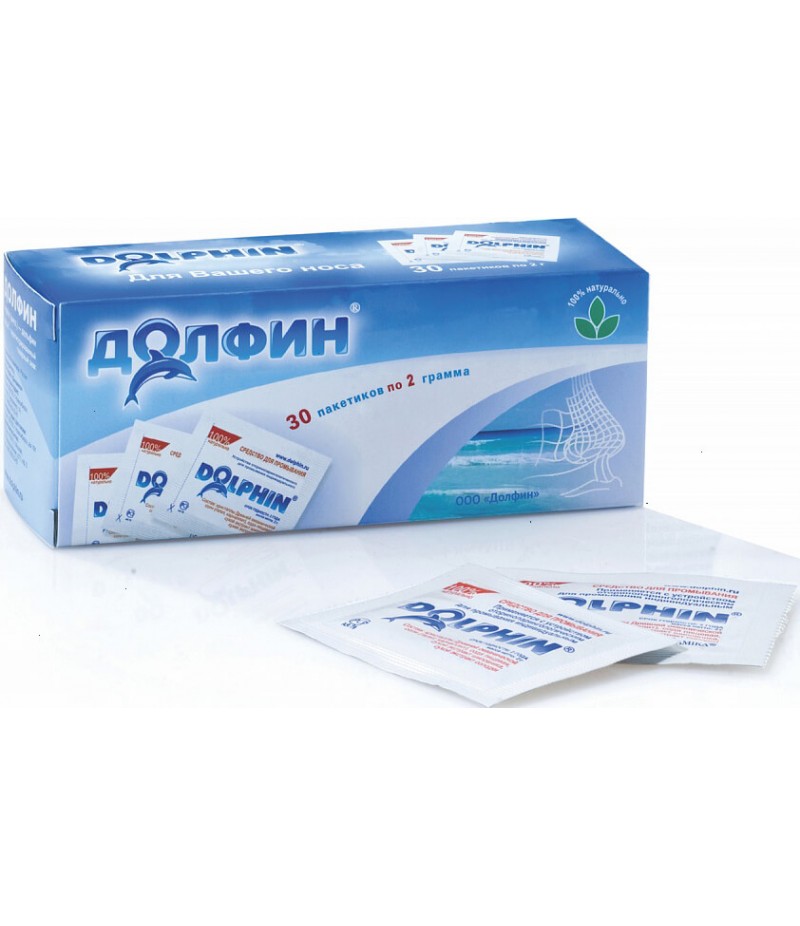Suprastin tabs 25mg #20
- $8.76
- Availability:In Stock
Suprastin instructions for use You can buy Suprastin hereClinical and pharmacological groupThe blocker of histamine H1 receptors. Anti-allergic drugForm of release, composition and packagingTablets ar
Tags: tabs
Suprastin instructions for use
You can buy Suprastin here
Clinical and pharmacological group
The blocker of histamine H1 receptors. Anti-allergic drug
Form of release, composition and packaging
Tablets are white or grayish white, in the form of a disc with a
bevel, with engraving "SUPRASTIN" on one side and risky on the other,
without or almost no smell.
1 tab. chloropyramine hydrochloride 25 mg
Excipients: stearic acid, gelatin, sodium carboxymethyl starch (type A), talc, potato starch, lactose monohydrate - 116 mg.
10 pieces. - blisters (2) - packs of cardboard.
20 pcs. - blisters (1) - packs of cardboard.
pharmachologic effect
Anti-allergic drug. The blocker of histamine H1 receptors.
Chloropyramine hydrochloride - a chlorinated analogue of tripelenamine
(pyribenzamine) is a classic antihistamine drug belonging to the group
of ethylenediaminic antihistamines.
It has antihistamine and m-cholinoblocking action, has antiemetic
effect, moderate spasmolytic and peripheral cholinoblocking activity.
The
therapeutic effect of chlorpyramine develops within 15-30 minutes after
ingestion, reaches a maximum within the first hour after administration
and lasts a minimum of 3-6 hours.
Pharmacokinetics
Suction
After ingestion of chloropyramine hydrochloride is almost completely absorbed from the digestive tract.
Distribution and Metabolism
Well distributed in the body, including the central nervous system. Intensively metabolized in the liver.
Excretion
It is excreted mainly by the kidneys.
Pharmacokinetics in special clinical cases
In children, excretion occurs faster than in adults.
Indications
- hives;
- serum sickness;
- seasonal and year-round allergic rhinitis;
- conjunctivitis;
Contact dermatitis;
- skin itching;
- acute and chronic eczema;
- atopic dermatitis;
- food and drug allergies;
- allergic reactions to insect bites;
- angioedema (Quincke's edema) - for the solution;
- angioedema (Quincke's edema) - as an adjuvant - for tablets.
Contraindications
Acute attack of bronchial asthma;
- Pregnancy;
- lactation (breastfeeding);
- Children under 3 years old (for tablets);
- lactase deficiency, lactose intolerance, glucose-galactose
malabsorption syndrome (for tablets, since 1 tablet contains 116 mg
lactose monohydrate);
- newborn children (full and premature);
- Hypersensitivity to the components of the drug.
Caution should be applied to the preparation with closed-angle
glaucoma, in patients with urinary retention and prostatic hyperplasia,
liver and / or kidney dysfunction, cardiovascular disease, in elderly
patients.
Dosage
Pills
Tablets should be taken orally during meals without chewing and drinking with sufficient water.
Adults appoint 25 mg (1 tab.) 3-4 times / day (75-100 mg / day).
Children aged 3 to 6 years are prescribed 1/2 tablet. (12.5 mg) 2 times / day; children aged 6 to 14 years - 1/2 tab. (12.5 mg) 2-3 times / day.
The dose can be gradually increased in the absence of side effects in
the patient, but the maximum dose should not exceed 2 mg / kg of body
weight.
The duration of the course of treatment depends on the symptoms of the disease, its duration and course.
Special patient groups
Elderly, emaciated patients: use of Suprastin requires extreme caution. In these patients, antihistamines often cause side effects (dizziness, drowsiness).
Patients with impaired liver function: a dose reduction may be
required due to a decrease in the metabolism of the active component of
the drug in liver diseases.
Patients with impaired renal function: a change in the regimen of drug
intake and a decrease in dose may be required due to the fact that the
active component is mainly excreted by the kidneys.
Side effects
Side effects occur, as a rule, extremely rarely, are temporary and pass after the drug is discontinued.
From the hemopoietic system: very rarely - leukopenia,
agranulocytosis, hemolytic anemia and other changes in the cellular
composition of the blood.
From the side of the central nervous system: drowsiness, fatigue,
dizziness, nervous excitement, tremor, headache, euphoria, convulsions,
encephalopathy.
From the side of the organ of vision: blurred vision, glaucoma, increased intraocular pressure.
From the cardiovascular system: a decrease in blood pressure,
tachycardia, arrhythmia (not always been established a direct
relationship of these side effects with taking the drug).
On the part of the digestive system: discomfort in the abdomen, dry
mouth, nausea, vomiting, diarrhea, constipation, loss or increase in
appetite, epigastric pain.
From the urinary system: difficulty urinating, retention of urine.
From the musculoskeletal system: muscle weakness.
Other: photosensitization, allergic reactions.
If any of the above effects occur, the patient should stop taking the drug and immediately consult a doctor.
Overdose
Symptoms: hallucinations, anxiety, ataxia, impaired coordination of movements, athetosis, convulsions; in
young children - agitation, anxiety, dry mouth, fixed dilated pupils,
redness of the face, sinus tachycardia, urinary retention, fever, coma; in adults, fever and redness of the face are observed intermittently,
after a period of excitement followed by convulsions and post-convulsive
depression, coma.
Treatment:
in the period up to 12 hours after taking the drug - gastric lavage (it
should be taken into account that the anticholinergic effect of the
drug prevents the emptying of the stomach), the appointment of activated
charcoal, the control of the parameters of blood pressure and
respiration, symptomatic therapy, and, if necessary, resuscitation. The specific antidote is unknown.
Drug Interactions
The drug enhances the effect of barbiturates, M-holinoblokatorov, opioid analgesics.
MAO inhibitors can enhance and prolong the anticholinergic action of chloropyramine.
When combined with ototoxic drugs, Suprastin can mask the signs of ototoxicity.
Antihistamines can distort the results of cutaneous allergological
tests, therefore, a few days before the planned test, the intake of this
group should be stopped.
special instructions
When combined with ototoxic drugs, Suprastin can mask the early signs of ototoxicity.
Diseases of the liver and kidneys may require a change (decrease) in
the dose of the drug, in connection with which the patient should inform
the doctor about the presence of a liver or kidney disease.
Taking the drug at night can increase the symptoms of reflux esophagitis.
Suprastin can strengthen the effect of ethanol on the central nervous
system, and therefore during the use of Suprastin should avoid the use
of alcoholic beverages.
Prolonged
use of antihistamines may lead to violations of the hematopoiesis
system (leukopenia, agranulocytosis, thrombocytopenia, hemolytic
anemia). If,
during prolonged use, there is an unexplained increase in body
temperature, laryngitis, pale skin, jaundice, the formation of ulcers in
the mouth, the appearance of hematomas, unusual and prolonged bleeding,
it is necessary to conduct a clinical blood test with the definition of
the number of uniform elements. If the results of the analysis indicate a change in the blood formula, the drug is stopped.
Impact on the ability to drive vehicles and manage mechanisms
The drug, especially in the initial period of treatment, can cause drowsiness, fatigue and dizziness. Therefore,
in the initial period, the duration of which is determined
individually, it is prohibited to drive vehicles or perform work
associated with an increased risk of accidents. After that, the degree of restriction on driving and the work with the
mechanisms of the doctor should be determined for each patient
individually.
Pregnancy and lactemia
There have been no adequate and well-controlled studies of the use of antihistamines in pregnancy. Therefore, the use of the drug in pregnant women (especially in the
first trimester and the last month of pregnancy) is possible only if the
potential benefit to the mother exceeds the possible risk to the fetus.
If it is necessary to use the drug during lactation, breastfeeding should be stopped.
Application in childhood
The drug is contraindicated for use in newborns (including prematurity).
The drug in the form of tablets is contraindicated in children under 3 years of age.
In case of violations of kidney function
With caution should apply the drug for violations of kidney function.
With violations of liver function
With caution should apply the drug for violations of liver function.
Application in old age
Elderly, emaciated patients: use of Suprastin requires extreme caution. in these patients, antihistamines often cause side effects (dizziness, drowsiness).


